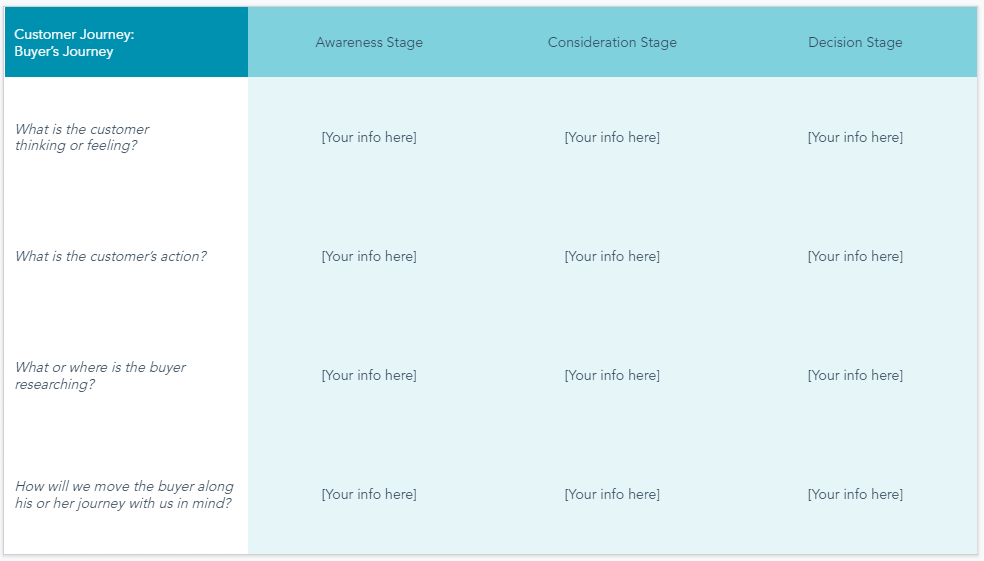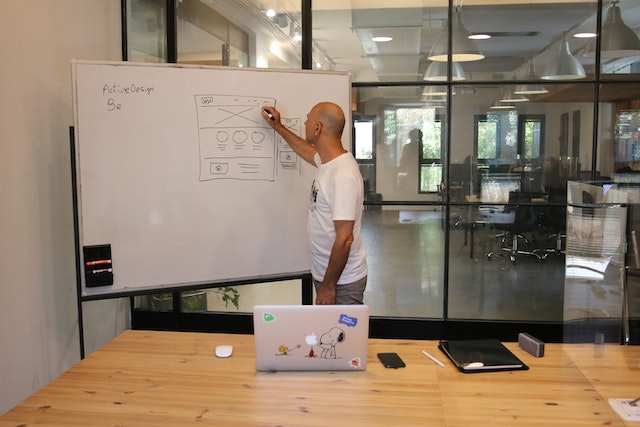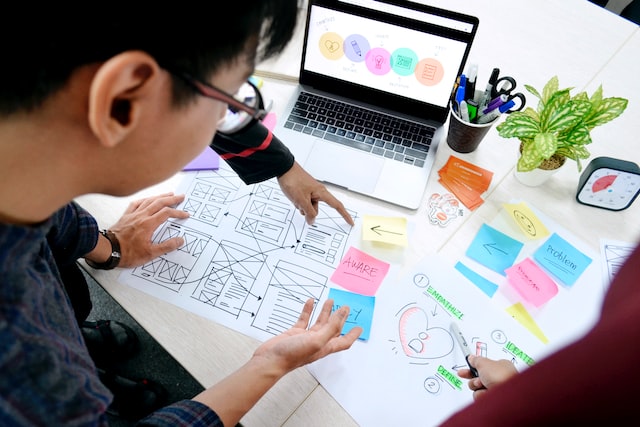With so much technology around, user experience is constantly evolving and changing. This has led new fields to use UX technology, like new platforms, products, and services. UX provides an intuitive experience for your products or services. Understanding and applying (UX) design to your site could create more positive experiences for clients, create interactive customer engagement, more ROI conversions, and perhaps build loyalty to your brand.
What is UX, and why is it essential for your business?
The term “User Experience” (UX) refers to the user engagement that a customer has. The method of comprehending consumer needs in marketing, design, and engineering disciplines to offer them better and higher-quality solutions. In order to comprehend this user experience process with reference to how well the service interacts.
Some unconscious questions that a customer might develop after using a new product or service could be:
- Did the product or service work for them?
- Did this truly offer any value?
- Was this easy to use?
- Was it pleasant to use?
Integrating this idea into your company is crucial because customers are the ones who ultimately decide whether to buy from you or someone else. To create experiences for users, you must get to know them, their needs, and what drives them. Utilizing tools like a business name generator can help you create a memorable and engaging brand identity that resonates with your audience. The user will let you know when a strong UX design is developed because you might see a boost in brand reputation, website traffic, customer satisfaction, and even energy and financial savings. They might want to make further purchases from you and possibly become loyal to your brand!
The user will let you know when a strong UX design is developed because you might see a boost in brand reputation, website traffic, customer satisfaction, and energy and financial savings. They might want to make further purchases from you and possibly become loyal to your brand!
More details about what is UX design
UX design combines all together the elements of human psychology, interactions, design thinking, graphic design, development, management, and business to develop a better user experience. The focus of UX design is to create learnable, usable, and useful systems to solve and provide solutions that could be physical or digital for users after understanding the experience of the user through research, tests, and analysis.
Facets of the User Experience
According to UX Honeycomb, the following factors should be considered while you develop your service or product with the user experience in mind:
- Useful: Easy to use or to navigate if it is a website.
- Usable: It must be a solution to your customer’s needs.
- Desirable: Here is where design elements will stand out.
- Findable: They need to be able to reach it easily.
- Accessible: Every person should be able to use your product or service.
- Credible: Your brand, value proposition, product, or service needs to be understandable and credible.
- Valuable: Your customers need to find your product or service important for them so they feel satisfied with the experience.
The UX design process
By researching, enhancing, and testing, UX Design has a general method to create a successful product or service. Because every company is different, these concepts may need to be adjusted or modified based on the particular business model of each organization. Here are presented six stages of UX Design:
- Planning or Understanding
- Research
- Analyzation
- Design
- Launching
- Analyzation (Again)
The planning phase

Creating a plan of action that aligns with the business mission ensures that all stakeholders are moving in the same direction. It is the first step in the UX design process every expert UI/UX design company will follow to create better customer engagement.
Set your goals
Whether you want to develop a new product, a company website, or enhance your e-commerce to increase sales, it is essential to identify the problem you want to solve. Specify the timing, tech needs, cost, and scope of the task. By defining a UX KPI (Key Performance Indicator), you may assess the effectiveness of your service or product and monitor your success rate. Determine the UX metrics you need to define and the direction your improvement efforts should go. There are Behavioral and Attitudinal KPIs that you could follow to make it UXD focus.
Understanding the user
Understanding your user’s challenges, loves, and dislikes, as well as what they desire, is the first step in creating an engaging user experience. If you understand their motives, it will enable you to assist them in providing better solutions and experiences. Making personal assumptions is not advised as it could end up costing you more money than getting to know your user. There are ways to collect data that will enable you to get the insights you need to reach your goals. Once you are aware of the pain points your users are experiencing, you can create a plan for design success.
Audience knowledge
Because it is crucial to provide value in order to produce a fantastic customer experience, consider the audience to be a relationship rather than a transaction. By conducting research and identifying key elements such as:
- Demographic information: Gender, age, profession, and income.
- Interests: Hobbies, values, preferred reading, types of sports.
- Consumer behavior: How long does the buying procedure last? What social media platforms do they prioritize using? Preferences of payment, cash, or credit card?
To help you define your audience, you must undertake the task of doing research. This is how to learn what target audience has the necessities that your product or service satisfies.
UX research

The main goal of design research is to provide information about the design process from the user’s perspective. Because of this, it is crucial to comprehend their motivations and behaviors. You could really help yourself to gather valuable insights for decision-making by investigating your user with the questions How, Where, When, and why are your users using your product or service to solve their problems? Some methods of data collection are observation, Interviews, and surveys. There are different product research platforms that could help you in this process.
Observational research
This approach could be used both before and after establishing your product or service. You are able to see their behaviors through observation. Analyze the details to establish what is and is not beneficial to the user. You might use the method of observation to comprehend user navigation if your goal is to increase website sales. Some important aspects if you are making a successful UX Web Design are the following observations:
- What actions are they taking?
- Where does the mouse travel?
- Why and where do they make pause?
- What tabs or calls to action do they use?
- Are they going back or forward, and why?
- What are the steps that they take?
- Do they get engaged with something on your website?
Interview research
This process requires interaction; it involves having in-depth conversations with a number of people to better understand them. Individual interviews are conducted to learn about the user or the stakeholder’s behaviors and habits. Interviews can reveal their opinions of a website, application, product, or process. To elaborate on an interview, here are some tips:
- Identify your goals for creating your interview.
- Write open questions.
- Avoid vague or closed questions.
- Choose a location that helps your audience, and you feel comfortable without interruptions.
- Create a rapport with the user: Empathize and build trust with the user before conducting the interview.
Survey research
They are a quick and convenient approach to learning a lot about a group while investing little effort. These questionnaires contain closed-ended questions. There are a lot of platforms that could help you create this questionnaire, like Google Surveys or SurveyMonkey. They make your life much easier because once your target audience answers the questions, you will automatically have the results with the help of this platform.
Analyze
After conducting an in-depth investigation, you will use the information you obtain to develop key components like empathy mapping, buyer personas, and creating a journey map.
Empathy mapping
Once your research is complete, you will have some extremely valuable insights regarding your target audience and be able to construct an empathy map. An empathy map illustrates user behavior and attitudes in order to develop empathy as a UX design ability. It helps you understand and empathize with the customer. You could use the “do, say, think, and feel” interview exercise that looks like the following example:

Buyer personas
To better understand your end user, you could create a buyer persona. They are archetypes that represent the needs of a larger audience. To build up a persona, add key aspects like name, gender, age, personality, what they like, and how they relate to your product. When their goals and yours become aligned, you can accomplish a great experience. The more detailed information about your buyers’ personalities, the better you can understand the experience you can offer them. After getting to know your audience, you will fill out these insights, which could be modified by your experience with them. Some important factors when creating your personas are:
- Their goals
- Demographic data like age, gender, and location.
- Their behaviors
- Habits
- Pain points
- Needs

Source: Xtensio
Create a journey map
The process by which a customer interacts with a business to accomplish a goal is known as the customer journey. It enables you to visualize how your product or service is used by customers as they learn about, purchase, and engage with it. A journey map is the story of the user’s thoughts and feelings during their experience with your company. It is a timeline skeleton. Some might assume that it is straightforward—a consumer comes into your business and purchases a product—but the reality is more complicated. According to Salesforce, 80% of customers value their experiences just as highly as their purchases. You can use journey mapping to understand the steps involved in providing the experience to your customers. After conducting extensive research on your target audience, it is recommended that you build your customer journey. Be sure to take the following factors into account:
1. The buying process: Start by drafting the route a consumer will travel through your company in order to accomplish a goal. List each stage of the purchasing procedure.
2. User actions: This element shows the separate ways your customers might achieve the goal of purchasing. It details what the customer does in every stage of the buying procedure.
3. Emotions: When customers purchase your product or service, they almost certainly experience emotions as they solve a problem. It is crucial to include this in the customer journey since it will enable you to recognize the uncomfortable feelings and prevent them from later turning into unfavorable perceptions of your business. Rewarding users for the action completed using Gamification in UX Design is a great way to encourage users to complete more tasks.
4. Pain points: Every unpleasant emotion has a pain point that gives rise to it. You may determine which stage your consumer is feeling negative emotions and determine why by adding pain points to your customer journey map.
5. Solutions: The final component is to discuss potential methods to enhance your purchasing procedure so that clients have fewer pain points and are happier while doing business with you on your website or in whatever other UX process.
There are free Customer Journey Maps that could help guide you through this process.

Source: HubSpot
UX design in action
You now have all the knowledge you require to fully comprehend your user so you can base your design choices on what that user needs and wants. For this stage, there are different steps to follow for UX design which are:
- Sketching: They are quick drawings to visualize their ideas on paper. This first process will get your creativity to emerge, and you could make decisions before investing a lot of time in designing.
- Wireframing: They have reduced representations of the page interface that specify a design’s structure and essential components. Typically constructed in greyscale, wireframes have placeholders for elements like images and buttons.
- Defining the IA: The process of bringing structure to the content of your website, app, product, or service is known as information architecture (IA), and it helps you make choices by reducing information overload.
- Mapping the user flow: This will guide how to best get the user to your product or service at each stage and where to lead them. An example of a flow could be when they arrive at the home page of a site to buy from you.
- Prototyping: They are mockups used to visualize how they will look when implemented.
UX Design if your Prototype is a Website Design

If your product is creating or improving a website page, there are some elements or methods that will help you to create your new design, which are the following:
1. Site Maps: Create a site map that will help you with the architecture of the website, the structure, the organization, and defining the pages and templates that you will need. It could also help you control the cost of the website.
2. Create a screen flow: You will be able to view and comprehend each area of your website as a result. After realizing the possibilities, you must proceed by making necessary improvements and changes. If you ever get lost in the process, there are themes that you could use to help you design your site.
3. Content strategy skills: Define what will appear in each section of your site. If it is your home page, ask yourself what the essential elements you need to improve or modify once you have observed the user are. Do you need to add calls to action (also known as buttons) or rewrite your value proposition? This will also help you to understand what elements your user sees every time they access a section of your website.
4. SERPs: Search Engine Result Page can be the difference between showing your site on the first pages of Google. Developing your website with SEO focus will allow potential users to find your site. Google will bring up a list of results in response to keyword searching, showing where the keywords have matched, for example, in the title, meta description, or in content, so make sure you have the correct keywords in your site to be found on the web.
5. Wireframe: Once you set up the bullet points of how you are going to build up your design with clarity, understanding, and structured layouts. You are ready to create a wireframe, the skeleton guide of the structure, the content outline, and explore the navigation system.
6. Interface Testing: The more information you can gather while creating a user interface, the better. Make a comparison of the efficacy and standard of the user experience across various user interfaces, including your current website. A little word change could significantly impact your page’s efficacy.
7. User Flow diagram: A user flow could be represented as an overview explaining where users can navigate on your website. They help you to understand your design based on your user’s goals.
Testing stage
One of the crucial phases before launching is testing. Before generating the final version of your website, software, product, or service, this stage will assist you with fixing errors. To ensure that more individuals are checking that everything is working, ask at least twenty of your users to test the system and look for any faults.
Second analyzation
Analyze the test results to identify the best course of action. If problems were detected, you would need to solve them, test them, and analyze them once again until there were none left, at which point it would be time to launch.

This is a lengthy process, and I am sure you can take steps to do it on your own as a UX designer, or you could hire an agency to do all the heavy lifting. The bottom line is that you need the right information to execute your business plan and to achieve the goals you have in mind.




